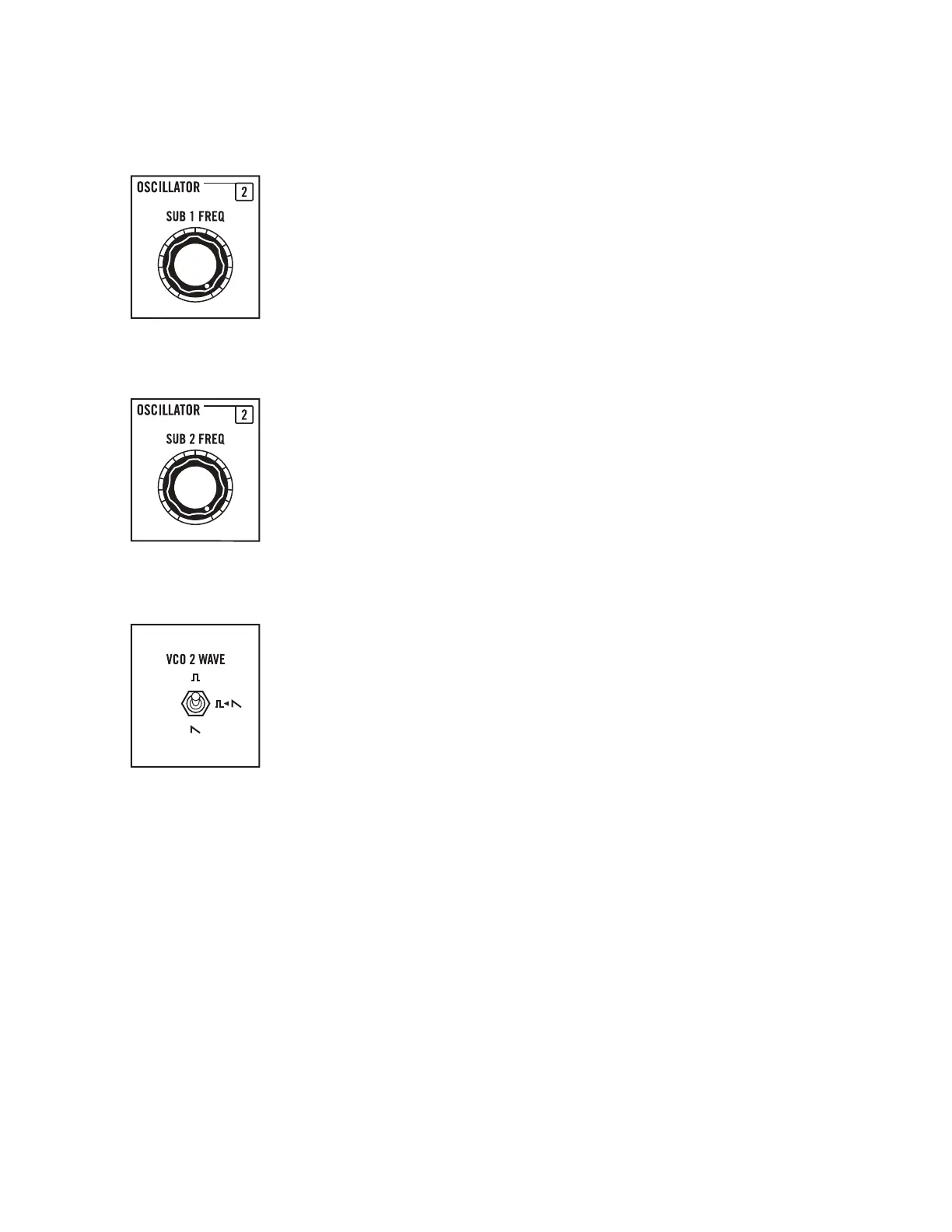20
OSCILLATOR 2 PARAMETERS (Continued)
SUB 1 FREQ (VCO 2)
The pitch, or frequency of SUB 1 (the first Subharmonic Oscillator of VCO 2) is
derived from the initial frequency (ƒ) of VCO 2. The SUB 1 frequency is equal to
the initial pitch of VCO 2, divided by a whole number integer value from 1 to 16.
As you rotate the SUB 1 FREQ knob, you are actually selecting the integer value
used. You can hear the pitch of SUB 1 change in stepped values, starting with 1
[unison tuning to VCO 2: (ƒ)/1 = (ƒ)] when this knob is rotated fully clockwise,
and proceeding in steps to a value of 16 as this knob is rotated counter-
clockwise. Each one of these values produces a note on the undertone scale
derived from the initial pitch of VCO 2.
SUB 2 FREQ (VCO 2)
The pitch, or frequency of SUB 2 (the second Subharmonic Oscillator of VCO 2)
is derived from the initial frequency (ƒ) of VCO 2. The SUB 2 frequency is equal
to the initial pitch of VCO 2, divided by a whole number integer value from 1 to 16.
As you rotate the SUB 2 FREQ knob, you are actually selecting the integer
value used. You can hear the pitch of SUB 2 change in stepped values, starting
with 1 [unison tuning to VCO 2: (ƒ)/1 = (ƒ)] when this knob is rotated fully
clockwise, and proceeding in steps to a value of 16 as this knob is rotated
counter-clockwise. Each one of these values produces a note on the undertone
scale derived from the initial pitch of VCO 2.
WAVEFORM (VCO 2)
The waveform being output by VCO 2, SUB 1, and SUB 2 is determined by this
three-position switch.
UP: In this highest position, a square wave is output from VCO 2, SUB 1, and
SUB 2. Square waves produce a hollow sound, providing a rich starting point
for nasal clarinet and bass sounds.
MIDDLE: The middle position is a special case. With the switch in this position,
SUB 1 and SUB 2 will both output sawtooth waves. However, VCO 2 will output a square (pulse) wave.
By default, the sawtooth output of SUB 1 is normalled for use as a PWM (Pulse Width Modulation)
source for the square wave of VCO 2. PWM can change the width of the pulse wave, altering its timbre
which is popular for creating string-type sounds.
DOWN: In this lowest position, a sawtooth wave is output from each. In addition to creating thick,
brassy sounds, the sawtooth wave also lends itself to powerful lead and bass sounds.
TIP: In the middle position, the PWM of VCO 2 caused by the audio-rate frequency of SUB 1 can appear to add a
second pitched component to VCO 2, even when the SUB 1 LEVEL knob is at its minimum position.
NOTE: The normalled connection described above can be overridden by connecting a control signal to the VCO 2
PWM input jack of the patchbay.
THE OSCILLATORS (Continued)
